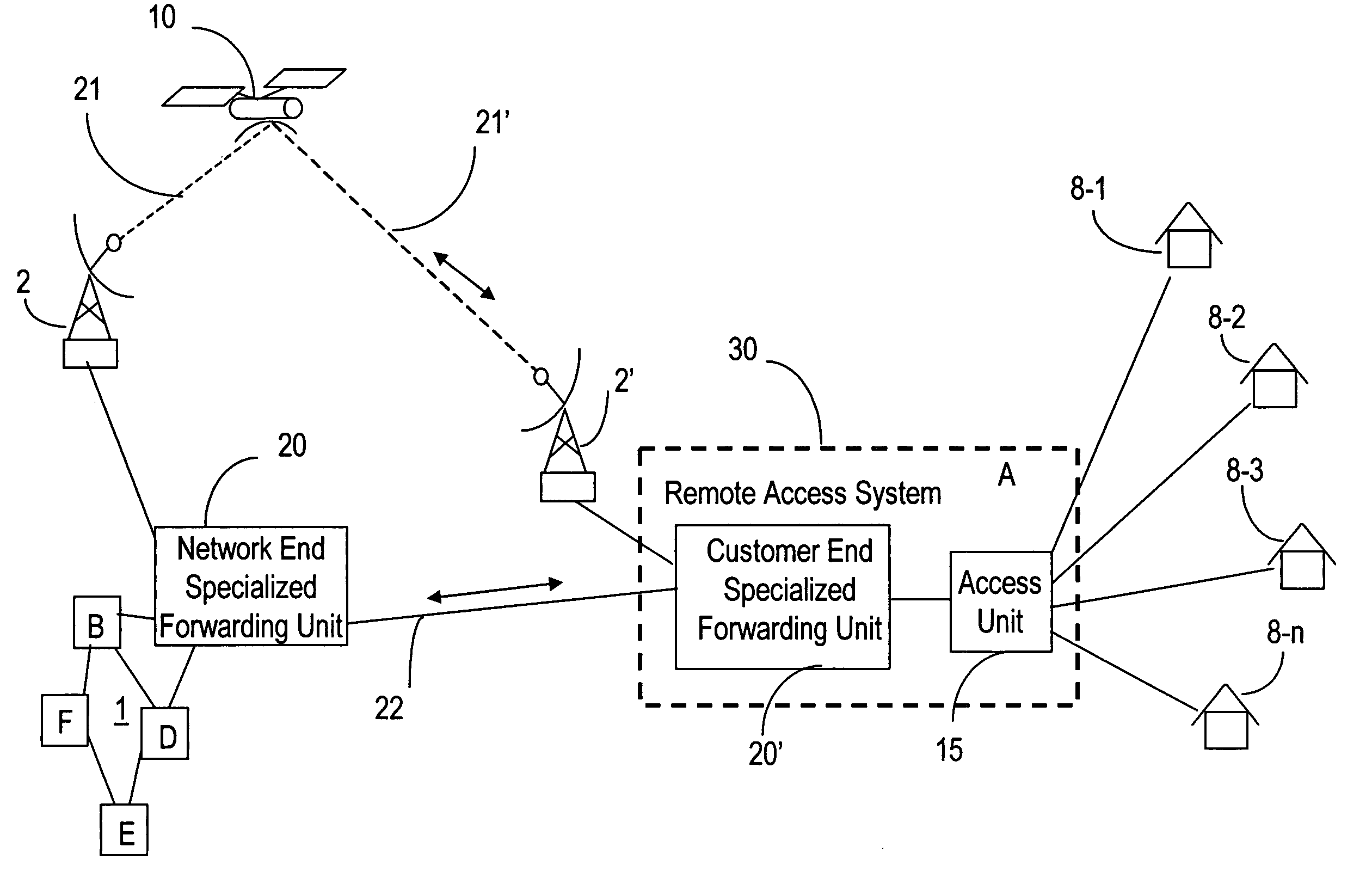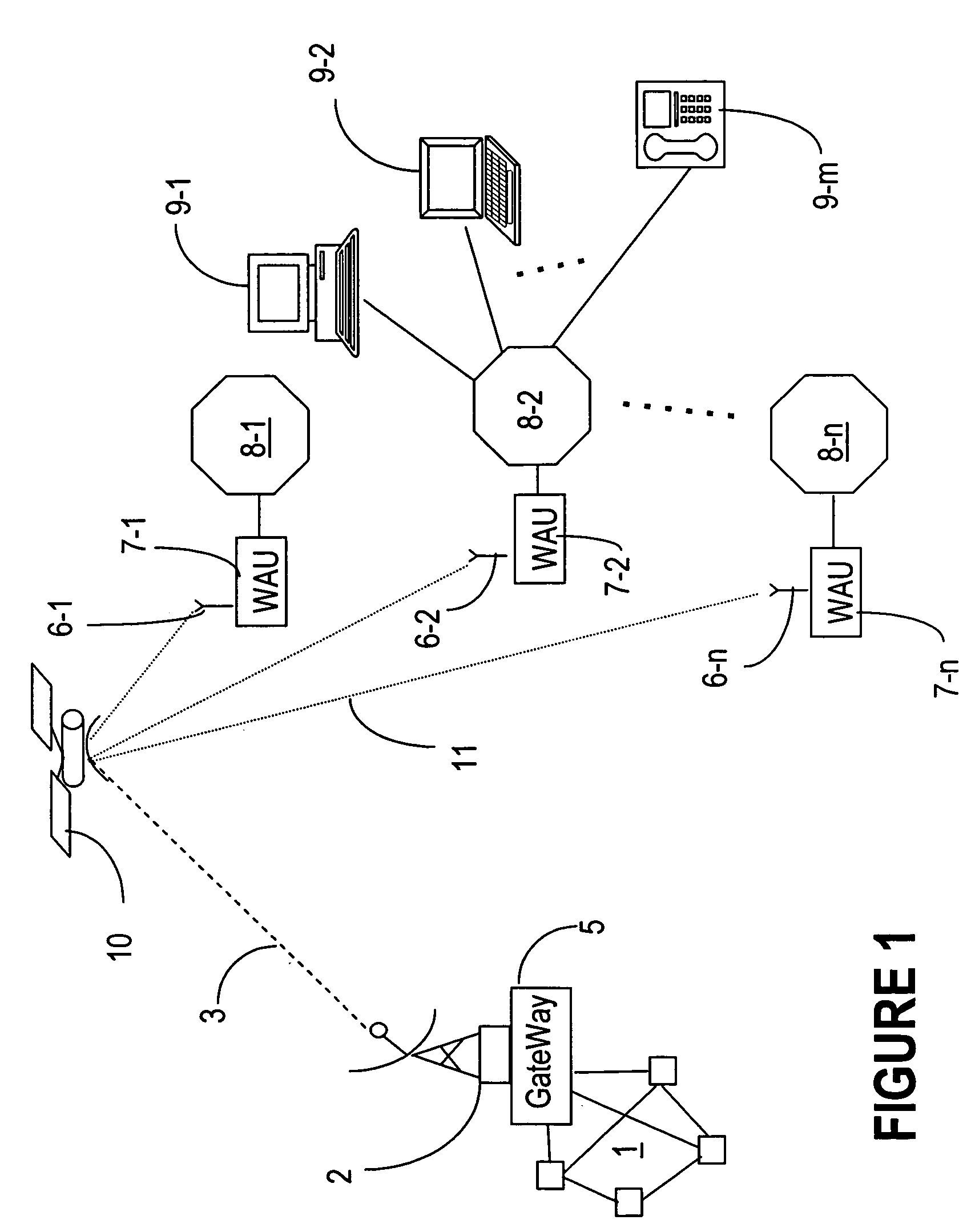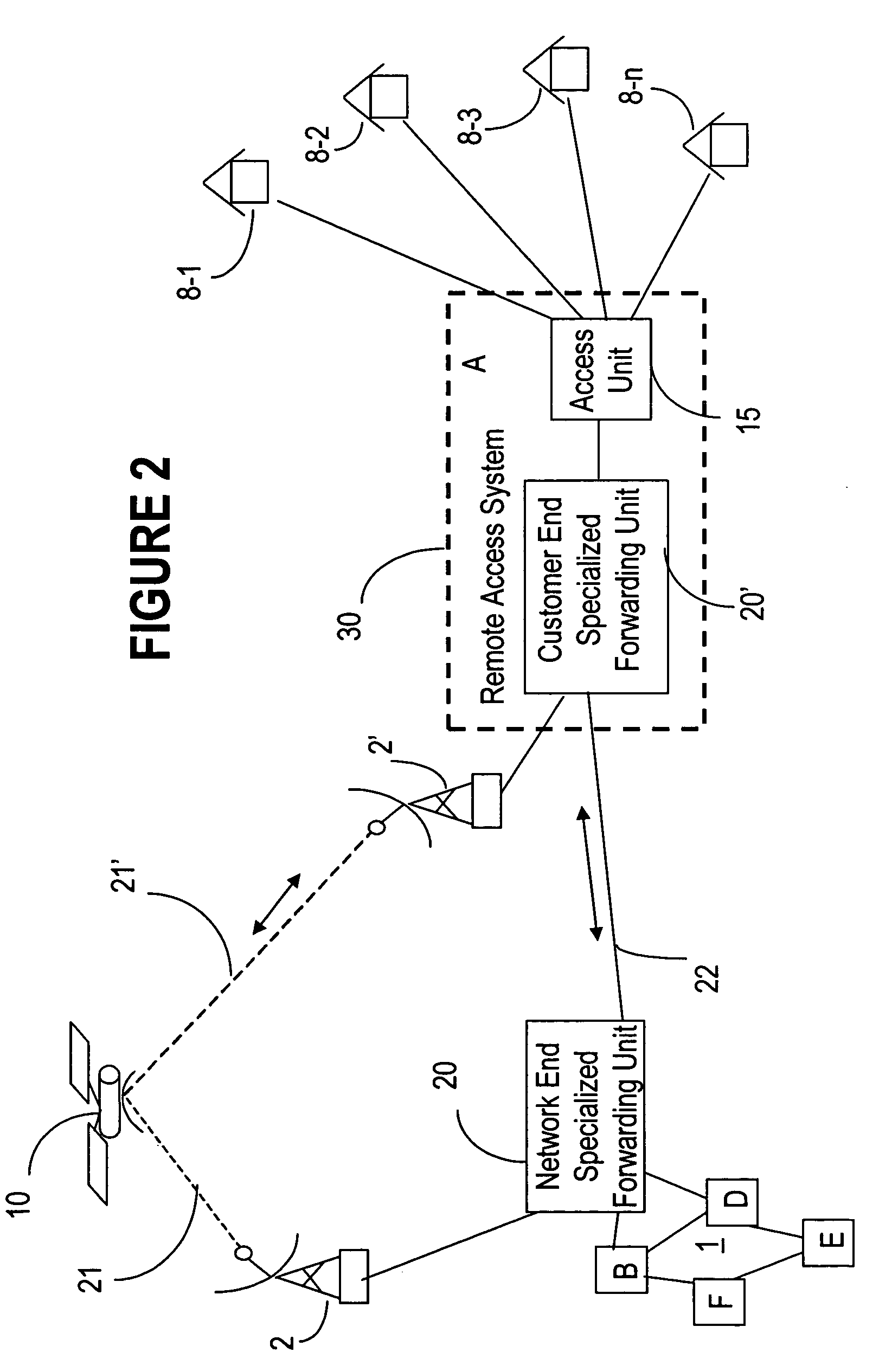Rural broadband hybrid satellite/terrestrial solution
a broadband hybrid satellite and terrestrial technology, applied in the field of rural broadband hybrid satellite/terrestrial network architecture solution, can solve the problems of poor performance, prohibitive backhaul cost from rural site to and from network core, and inability to control the forwarding of communication applications through the different links, etc., to achieve high quality, cost-effective effect, and high performance outcomes for end customers
- Summary
- Abstract
- Description
- Claims
- Application Information
AI Technical Summary
Benefits of technology
Problems solved by technology
Method used
Image
Examples
Embodiment Construction
[0038]The system provided by the above identified UP Patent is described next with a view to better understanding the operation and advantages of the present invention. FIG. 1 shows a satellite based access system for providing a plurality of users with high rate, low latency data, as for example proposed in the above-referenced U.S. Pat. No. 6,591,084 (Chuprun et al.). In this example, a satellite 10 is connected to a ground antenna 2 in communication with a gateway 5, connected to a terrestrial network 1 (PSTN, ISDN, IP, etc). Satellite 10 may be accessed by a plurality of base stations 6-1 to 6-n at a plurality of cell sites 8-1 to 8-n. The base stations perform seamless protocol conversion and multiport distribution of the satellite signals to each user in the respective cell.
[0039]Each cell enables a different type of data service, tailored to the user requirements of each cell population. For example, cell 8-2 could comprise a medical campus, in which case the services provide...
PUM
 Login to View More
Login to View More Abstract
Description
Claims
Application Information
 Login to View More
Login to View More - R&D
- Intellectual Property
- Life Sciences
- Materials
- Tech Scout
- Unparalleled Data Quality
- Higher Quality Content
- 60% Fewer Hallucinations
Browse by: Latest US Patents, China's latest patents, Technical Efficacy Thesaurus, Application Domain, Technology Topic, Popular Technical Reports.
© 2025 PatSnap. All rights reserved.Legal|Privacy policy|Modern Slavery Act Transparency Statement|Sitemap|About US| Contact US: help@patsnap.com



